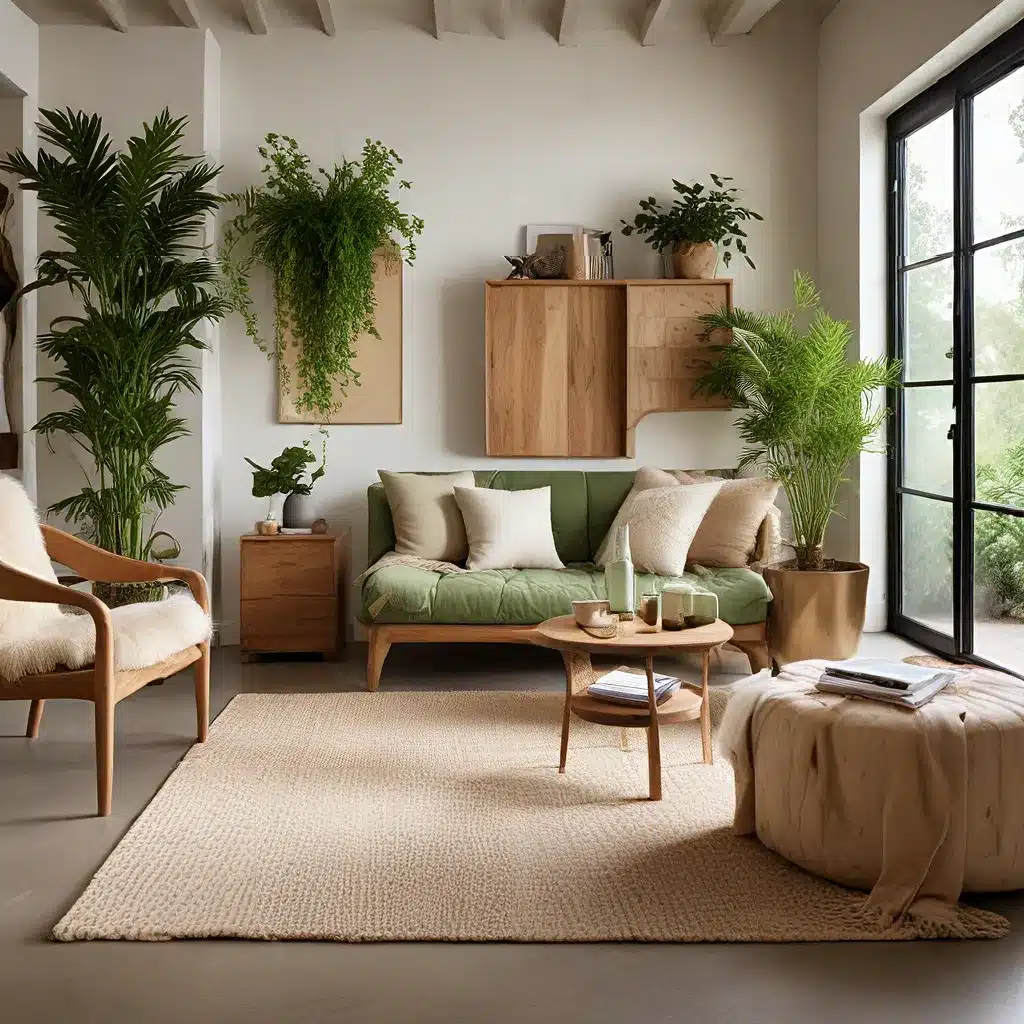
As the global population continues to grow and the demand for resources increases, the importance of sustainable living has become more apparent than ever. In the realm of interior design and home decor, eco-friendly practices are gaining traction, as homeowners and design enthusiasts seek to create living spaces that not only reflect their personal style but also minimize their environmental impact.
Embracing Sustainable Furniture
At the heart of sustainable home decor is the use of renewable, biodegradable, and nontoxic materials for furniture. Furniture made from sustainable materials often boasts superior durability and longevity, reducing the waste produced and the resources required to manufacture new pieces.
When shopping for eco-friendly furniture, consider options made from natural materials such as bamboo and stone, or recyclable materials like glass, ceramics, and metal. Reclaimed or repurposed wood can also be a unique and sustainable choice, adding character and history to your living spaces.
Buying locally sourced furniture from small businesses, craft fairs, or vintage stores not only supports the local economy but also reduces the carbon footprint associated with long-distance transportation. By eliminating the need for single-use packaging and reducing air and water pollution, you can make a meaningful contribution to environmental preservation.
Harnessing the Power of Solar Energy
One of the most significant strides in sustainable home design is the integration of solar energy. Solar power systems, such as solar panels or shingles, harness the sun’s energy and convert it into usable electricity, reducing reliance on fossil fuels and lowering homeowners’ electricity bills.
A study by the Lawrence Berkeley National Laboratory found that solar energy technology can increase a home’s value by an average of $15,000. With the growing accessibility and affordability of solar power solutions, it’s an investment that not only benefits the environment but also provides long-term financial rewards.
Bringing the Outdoors In
Incorporating plants into your home decor is a simple yet effective way to introduce sustainable elements. Not only do plants enhance the aesthetic appeal of a space, but they also play a crucial role in improving indoor air quality by absorbing carbon dioxide and releasing oxygen. Strategically placing plants throughout your home, using shelves, hangers, and stands to create vertical layers, can add a touch of nature and a sense of calm to your living spaces.
Lighting the Way with Sustainable Illumination
Swapping out traditional incandescent light bulbs for energy-efficient LED or compact fluorescent light (CFL) options is a straightforward step towards sustainable home decor. These modern lighting solutions not only use less energy to produce the same amount of light but also have a longer lifespan, reducing the frequency of replacements and minimizing waste.
Additionally, designing your home’s lighting around natural sunlight can further enhance its sustainability. By using light wall colors and strategically placed mirrors to reflect sunlight, you can create a brighter, more open atmosphere while reducing the need for artificial lighting.
Choosing Eco-Friendly Finishes and Textiles
When it comes to paint and stains, volatile organic compounds (VOCs) can be a significant source of indoor air pollution, potentially causing respiratory issues and other health concerns. Opting for low-VOC or zero-VOC paints and stains is a simple way to create a healthier living environment.
Similarly, natural textiles such as cotton, linen, and wool are a sustainable alternative to synthetic materials. These natural fibers are soft, breathable, and biodegradable, reducing the environmental impact compared to their synthetic counterparts, which can take decades or even centuries to break down.
Upcycling and Repurposing: Giving New Life to Old Pieces
Upcycling and repurposing furniture is an ingenious way to incorporate sustainable design into your home. By breathing new life into old, worn-out pieces, you can not only reduce the amount of furniture ending up in landfills but also create unique, personalized decor items that reflect your individual style.
The EPA estimates that over 12 million tons of furniture is produced yearly, with a majority of it ending up in landfills within 10 to 15 years. By upcycling furniture from around your home or sourcing pieces from garage sales, thrift stores, or online marketplaces, you can save these items from the dump and give them a fresh, sustainable makeover.
The Importance of Sustainable Living
As the world’s population is projected to reach 10 billion by 2050, the demand for resources is expected to increase significantly. However, experts warn that an increasing number of people may be unable to meet their basic needs due to the strain on resources.
Sustainable living, including the adoption of eco-friendly home decor practices, is not just a trend but a necessary step towards reducing our collective environmental impact. By making conscious choices to use resources wisely, reduce waste, and minimize pollution, we can contribute to a greener and more sustainable future.
The good news is that sustainable living is gaining popularity, which means there are more products and resources available to help homeowners and design enthusiasts alike embrace a greener lifestyle. From simple DIY projects to larger-scale renovations, there are countless ways to incorporate sustainable elements into your living spaces and reduce your carbon footprint.
At Urban Grace Interiors, we believe that sustainable design is not only good for the environment but also enhances the overall living experience. By working closely with our clients, we can help them create personalized, luxury-inspired interiors that seamlessly integrate eco-friendly materials and practices, ensuring that their homes are not only visually stunning but also environmentally responsible.
Remember, sustainable living is a journey, and every small step you take towards a greener home can make a significant difference. By embracing eco-chic design trends and incorporating sustainable materials and practices, you can create a living space that reflects your personal style while positively impacting the planet.

